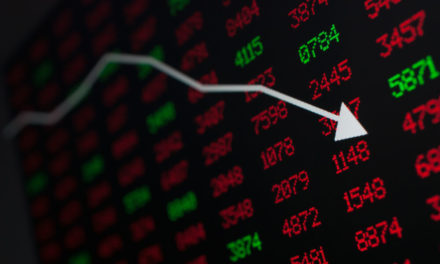There are three major U.S. equities markets investors track on a daily basis and one of the largest is the Standard and Poor 500, but exactly what is the S&P 500 and how does it work?
For starters, the Standard and Poor moniker comes from the two companies that founded the index back in 1957.
Each of the three major indexes track stocks based on different criteria and as one of the biggest indexes, investors often use the S&P 500 as a benchmark of the overall market and the U.S. economy in general.
There is nearly $10 trillion indexed or benchmarked in the S&P 500, with indexed assets comprising nearly $3.4 trillion of that overall total.
The index covers nearly 80% of available market capitalization.
What Is the S&P 500?
Put simply, the S&P 500 tracks large-cap companies in the U.S. It assesses companies by market capitalization — the value of all shares of stock a company has issued.
That’s why it is considered to be one of the best benchmarks for the American stock market as well as the U.S. economy.
In addition to being a large-cap stock, companies have to meet additional criteria to be added to it.
- Must be a U.S. company.
- Must have a market cap of $6.1 billion or more.
- Its public float must be at least 50% of its outstanding shares.
- Must either have a corporation or common stock organizational structure. LLCs, business development companies, limited partnerships and exchange-traded funds are not eligible.
- Must list on an eligible exchange like the New York Stock Exchange, Nasdaq or Cboe. Over-the-counter or pink sheet stocks are not eligible for the S&P 500.
But not all large-cap companies are listed on the S&P 500. Here are the top 10 companies on the index, as of Feb. 14, 2020:
- Microsoft Corp. (Nasdaq: MSFT).
- Apple Inc. (Nasdaq: AAPL).
- Amazon.com Inc. (Nasdaq: AMZN).
- Alphabet Inc. (Nasdaq: GOOG).
- Facebook Inc. (Nasdaq: FB).
- Berkshire Hathaway (NYSE: BRK.B).
- Visa Inc. (NYSE: V).
- JPMorgan & Chase Co. (NYSE: JPM).
- Johnson & Johnson (NYSE: JNJ).
- Walmart Inc. (NYSE: WMT).
For a complete list of the companies listed, click here.
How the S&P 500 Is Different From Other Indices
While stocks in the S&P 500 have to be listed on other major indices, like the New York Stock Exchange or the Nasdaq, there are some differences between the three.
For one, it does have more large-cap stocks than the Dow Jones Industrial Average. The Dow only carries 30 stocks compared to the 500. The Dow also weights its listings on price. The S&P 500 is based on market capitalization.
The Dow doesn’t have transportation or utilities as part of its listing, but the S&P 500 has included utilities on its list.
Another difference is what stocks are held in each index.
In the Nasdaq, nearly 53% of the companies listed are technology-related, compared to just 22% for the S&P 500.

Even though there are differences, all three indexes tend to have the same price fluctuations. That’s good for investors as it means you don’t have to watch all three of them to gain a bigger market picture.
Milestones for the S&P 500
Despite only starting on Jan. 3, 1950, the index has had its share of ups and downs.
As with any index, it has experienced the highs and the lows of the market. Here are a few of those milestones:
- Jan. 3, 1950 — The first close. The index closed at 16.66.
- June 4, 1968 — The first time it closed above 100.
- Oct. 19, 1987 — S&P 500 closed with its largest percentage loss (20.5%).
- March 24, 1995 — First close above 500.
- Feb. 2, 1998 — First close above 1,000.
- Oct. 13, 2008 — Largest percentage gain (11.6%).
- Aug. 26. 2014 — First close above 2,000.
- June 12, 2019 — First close above 3,000.
- Feb. 19, 2020 — All-time high close (3,386.15).
Making Money With the S&P 500
Remember, the S&P 500 is an index, not stock. That means you can’t directly invest in it.
But there are ways you can make money. One big way would be to invest in exchange-traded funds that track the index and there are three: the Vanguard S&P 500 ETF (NYSEARCA: VOO), the iShares Core S&P 500 ETF (NYSEARCA: IVV) and the SPDR S&P 500 ETF (NYSEARCA: SPY).
You can also invest in companies listed in the index but as always, do your homework first.
Coming soon to Money and Markets: Which S&P 500 ETF is the best investment.
Related:
5 S&P 500 Stocks Sell Above $1k. Buy These Two
Firm Predicts Gold Will Outperform S&P 500 in 2020
Buffett Could Soon Be the S&P 500’s Longest-Tenured CEO
Closing Bell: S&P 500 Tops 3,300 as Trump Notches Another Trade Win
Stocks Close With Best Annual Gains in 6 Years; S&P 500 Up Over 28% in 2019
Credit Suisse: Bullish S&P 500 Will Go 10% Higher in 2020
Cramer: Trade War Bashers Should Apologize as S&P 500 Soars to Record
Deutsche Bank: S&P 500 Overvalued, Recession Coming
S&P 500 Dividends Could Be a Hot Ticket for Investors as Bond Yields Fall
S&P 500 Hits Record on US-China Trade Optimism
The S&P 500 Is Massively Overvalued and the Numbers Don’t Lie





